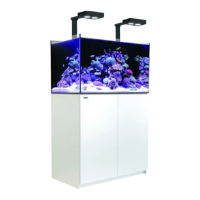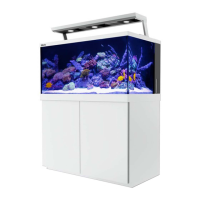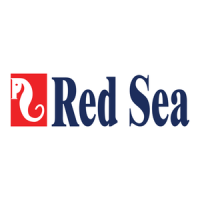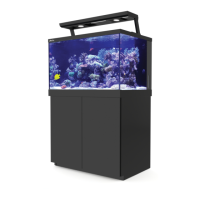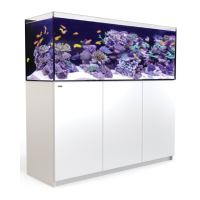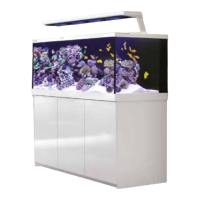Red Sea MAX User Manual
4.
5.
6.
7.
8.
9.
10.
Direct the pump nozzles to produce good water
movement throughout the tank.
Add 50 ml (1.7 oz) of Red Sea NitroBac.
Program the lighting system, starting with a 6-hour period
of light on the first day.
Gradually increase this interval by 1 hour every two days
until it reaches 12-14 hours per day.
Test the water parameters, especially ammonia and
nitrite.
Change 10-25% of the water weekly, siphoning out any
settled debris.
Start a regular maintenance program (see next chapter).
Algae blooms
During the cycle process, you can expect a series of algae
blooms. First the brown diatom algae will appear, followed by
red cyanobacteria and then green filamentous algae. These
algae blooms constitute a natural and typical part of the cycle
in reef tanks. They will disappear naturally, giving way to
patches of desirable purple-pink coralline algae on the live
rocks.
To control this algae bloom, introduce some "cleaning"
herbivores to the new aquarium. These "janitors" play an
important long-term role, keeping your aquarium in good
condition. They help control algae, remove detritus, eliminate
the occasional small dead fish trapped in the rockwork and
scavenge for scraps of food that fall to the bottom or between
rocks. They play an especially important role if your tank has
substrate, keeping it clean and aerated. We recommend the
following species:
• Brittlestar starfish
• Pistol shrimp
• Detrital feeding sea cucumbers
Additionally, we recommend introducing herbivorous snails,
such as
Asraea tuncta
, or Turban snail. The blue-legged hermit
crab,
Clibanarius tricolor
, plays a similar role, as does the
attractive skunk cleaner shrimp,
Lysmata grabhami
.
When the ammonia and nitrite levels have peaked and
subsequently reach zero, you have finished the cycle.
Stocking the tank
After the Red Sea MAX has finished the cycle and the algae
blooms are under control, your aquarium is ready for fish and
invertebrates. Here are some guidelines to help you stock a
healthy and successful aquarium:
• Compatibility of species: Before adding any fish or
invertebrates, familiarize yourself with any compatibility
issues among your desired species. Tank inhabitant
compatibility is crucial to a successful and healthy reef
aquarium. Incompatible species will increase stress in the
fish, increasing the risk of disease and considerable loss.
22
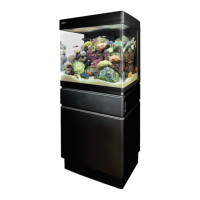
